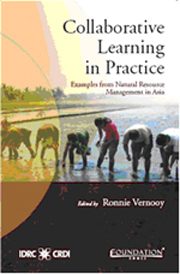Book contents
- Frontmatter
- Contents
- Foreword
- Acknowledgements
- Preface
- Chapter 1 Toward Centres of Excellence for CBNRM (Community-Based Natural Resource Management)
- Chapter 2 Participatory Research and Development in South Asia
- Chapter 3 Adaptive Learning: From Isang Bagsak to the ALL in CBNRM Programme
- Chapter 4 Mainstreaming CBNRM in Chinese Higher Education
- Chapter 5 Comparing the Case Studies
- References
- Notes on Contributors
- Index
Preface
Published online by Cambridge University Press: 26 October 2011
- Frontmatter
- Contents
- Foreword
- Acknowledgements
- Preface
- Chapter 1 Toward Centres of Excellence for CBNRM (Community-Based Natural Resource Management)
- Chapter 2 Participatory Research and Development in South Asia
- Chapter 3 Adaptive Learning: From Isang Bagsak to the ALL in CBNRM Programme
- Chapter 4 Mainstreaming CBNRM in Chinese Higher Education
- Chapter 5 Comparing the Case Studies
- References
- Notes on Contributors
- Index
Summary
Recently, capacity development has once again become popular. In a world of struggling, failing, and collapsing institutions and organizations this does not come as a surprise. But capacity development is a complex issue – easier talked about and written about than put into practice.
Webster's Online Dictionary (consulted 29 September, 2008), gives eight definitions of capacity. Among them, are the ability to perform or produce and the power to learn or retain knowledge. These two definitions seem closely linked when the concept of capacity is applied to a professional field, such as teaching, research, or development planning and implementation. In these fields, professionals are preoccupied with both individual and organizational (what could be called collective) learning and performance. Capacity development then refers to strengthening individual and collective abilities to perform one or more tasks or to produce valuable outcomes and impacts.
This book is about collaborative learning for participatory rural development with a focus on community-based natural resource management approaches. Although informed and inspired by capacity development and learning theory, the emphasis of the three in-depth, Asian case studies highlighted here is on rural development practice. The three cases have the following features in common – they focus on real-life, complex learning situations concerning natural resource management dilemmas; they are examples of the gradual making of novel communities of practice for capacity development; they demonstrate both the process and outcome merits of using a variety of learning methods; and they make facilitators an integral part of the learning process.
- Type
- Chapter
- Information
- Collaborative Learning in PracticeExamples from Natural Resource Management in Asia, pp. x - xiPublisher: Foundation BooksPrint publication year: 2009



